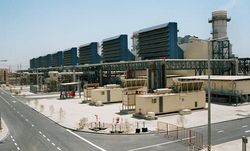
OR WAIT null SECS
© 2024 MJH Life Sciences™ and Turbomachinery Magazine. All rights reserved.
Guidelines for dry gas seal seal troubleshooting
The dry gas seal support system not only regulates gas streams to the dry gas seal, but also transmits the necessary information to monitor the seal’s condition. Support system instrumentation, with appropriate alarms, helps users detect and analyze issues. Not all failures are catastrophic and quite often values will change slowly over time. In such scenarios the system is used to identify the problems as they occur.
This article is an excerpt from the paper, "Examination of Methods of Dry Gas Seal Supply, Regulation, and Monitoring" presented at the 2018 Asia Turbomachinery Pump Symposium by Vladimir Bakalchuk and Sreenivasulu Chinnaswamy of Flowserve, Kevin Dwyer and Rich Hosanna of John Crane, Robert C. Eisenmann Jr. of BP and Jim MGraw of VAM Consulting.
Alarms
It is important to distinguish the difference between alarms and trips. Alarms trigger an alert that a condition outside the normal range of operation has been reached. Trips initiate an automatic shutdown of the compressor. Alarms should be actionable and allow operations to respond and correct the condition preceding any trips. The high (H) alarm is the “alarm”, and the high high (HH) alarm is the “trip”. Traditionally, alarm values are simple set points so increasing flow rates, valve movements, or increasing pressures may go un-noticed as conditions degrade. This significantly reduces the ability of the site personnel to catch issues early and implement corrective actions or plan for maintenance.
Trend alarms, alarms based on change in measurement value over a set time period, can be applied within site condition monitoring systems to alert the technical team prior to a traditional alarm triggering.
Trends
When troubleshooting, absolute values are not necessarily the main concern. As with most parameters in equipment monitoring values from seal gas system instruments are never steady or constant. Values will vary or drift over short periods of time and can cause some concern to unexperienced personnel. This is particularly true of flow instruments for the reasons discussed in the instrumentation section.
While large step changes are significant and need to be addressed, small variations are normal. In order to accurately diagnose problems, data needs to be trended over time to show minimum, maximum and average values. A change in trends over time is a key point to help identify potential issues.
Correlation of dataOne of the fundamental steps in any diagnostic activity is to validate the data. Instrument calibrations and redundant transducers are useful for accuracy but may not validate a potential failure mode. Here we rely on correlation of data between different types of transducers for validation. All sections of the system contribute to failure analysis, because each particular failure mode can affect each section differently. A leaking seal can increase the primary vent flow, but so can a malfunction of the secondary seal gas supply regulator.
To properly diagnose the problem, the end user should examine not only the flow transmitter in the primary vent, but all of the transmitters in the system to seek out any abnormalities. A simple cause and effect can be completed on the dry gas seal support system around common seal failure modes. This allows the facility to improve monitoring, change conditions, plan for an outage, and address the root cause of problems, instead of responding to a failure and equipment trip.



